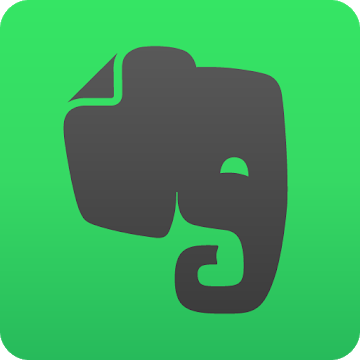
Evernote는 개인 및 그룹이 모든 항목을 잊지 않고 기억하며, 아이디어를 실천에 옮기고, 함께 더 수월하게 일할 수 있게 돕는 것을 사명으로 삼고 있습니다. Android Evernote 앱은 사람들이 아이디어를 정리하고, 메모를 작성하고 저장하며, 다른 사람들과 협력할 수 있는 도구를 제공합니다.
Evernote에서는 새로운 플랫폼이 등장할 때마다 Evernote를 해당 플랫폼에서 즉시 사용할 수 있게 제공하는 걸 목표로 두고 있습니다. ChromeOS에서 Google Play를 사용할 수 있게 되면서 새로운 기회를 포착한 팀은 앱을 플랫폼에 출시하기로 했습니다.
진행한 작업
Evernote는 하나의 앱을 여러 플랫폼과 폼 팩터에서 사용할 수 있도록 하는 데 중점을 두고 있기 때문에 ChromeOS를 Evernote의 개발 과정 전체의 개선 기회로 삼았습니다. Evernote 개발팀에서는 Evernote 앱이 휴대기기에서뿐 아니라 더 큰 폼 팩터에서도 좋은 성능을 보여주도록 코드를 모듈화하는 데 공을 들였습니다. Evernote가 ChromeOS에서 사용한 몇 가지 기능이 있었습니다.
필기 입력을 텍스트로 변환하는 기능을 제공하는 Evernote는 새로운 지연 시간이 짧은 스타일러스 API를 사용해 신속하게 터치스크린 필기 입력을 구현할 수 있었습니다. Google의 API는 앱이 OS 일부를 우회하여 디스플레이에 직접 그릴 수 있게 허용하기 때문에 매우 신속하게 선을 렌더링해줍니다. 지연 시간이 발생하지 않으므로 사용자는 종이 위에 그림을 그리는 느낌을 받습니다. Evernote에 따르면 그림 그리는 걸 멈출 수 없을 정도로 빠르고 자연스러우며 부드러운 느낌을 줍니다. 이 지연 시간이 짧은 스타일러스 API는 Evernote팀이 필기 입력 기능의 한계가 어디까지인지 도전하도록 만들었습니다.
ChromeOS의 키보드 환경은 모바일 키보드 환경과 다르기 때문에 사용자가 빠르게 메모를 작성할 수 있도록 단축키를 추가했습니다. 또한 모바일 폼 팩터 및 이보다 큰 Chromebook 폼 팩터 둘 다에 툴바를 제공해야 하는지 신중하게 고려하여 툴바를 앞으로 더 모듈화할 수 있도록 몇 가지를 조정했습니다. 또한 뒤로 버튼이 없어도 탐색 기능이 앱의 계층 구조를 지원하도록 했습니다.
Evernote는 터치스크린이 제공하는 기회에 재미있는 방식으로 접근했습니다. Evernote의 제품 관리자인 May Allen은 다음과 같이 말했습니다.
“흥미로운 프로젝트였습니다. 키보드를 최적화하는 일 뿐만 아니라 터치스크린 최적화도 필요했기 때문입니다. 이 두 가지 기능을 모두 가진 Chromebook은 정말 멋진 기기입니다."
결과
Evernote는 ChromeOS 사용 경험에 관해 사용자로부터 긍정적인 의견을 받았으며, 일반적인 앱 사용자보다 플랫폼에서 더 많은 시간을 보내고 있음을 알게 되었습니다. 평균적인 Evernote 사용자는 대형 화면 기기에서는 3배 더 많은 시간을, Google Pixelbook에서는 4배 더 많은 시간을 보냅니다.
시작하기
ChromeOS에 맞게 앱을 최적화하는 가장 좋은 방법을 알아보세요.

